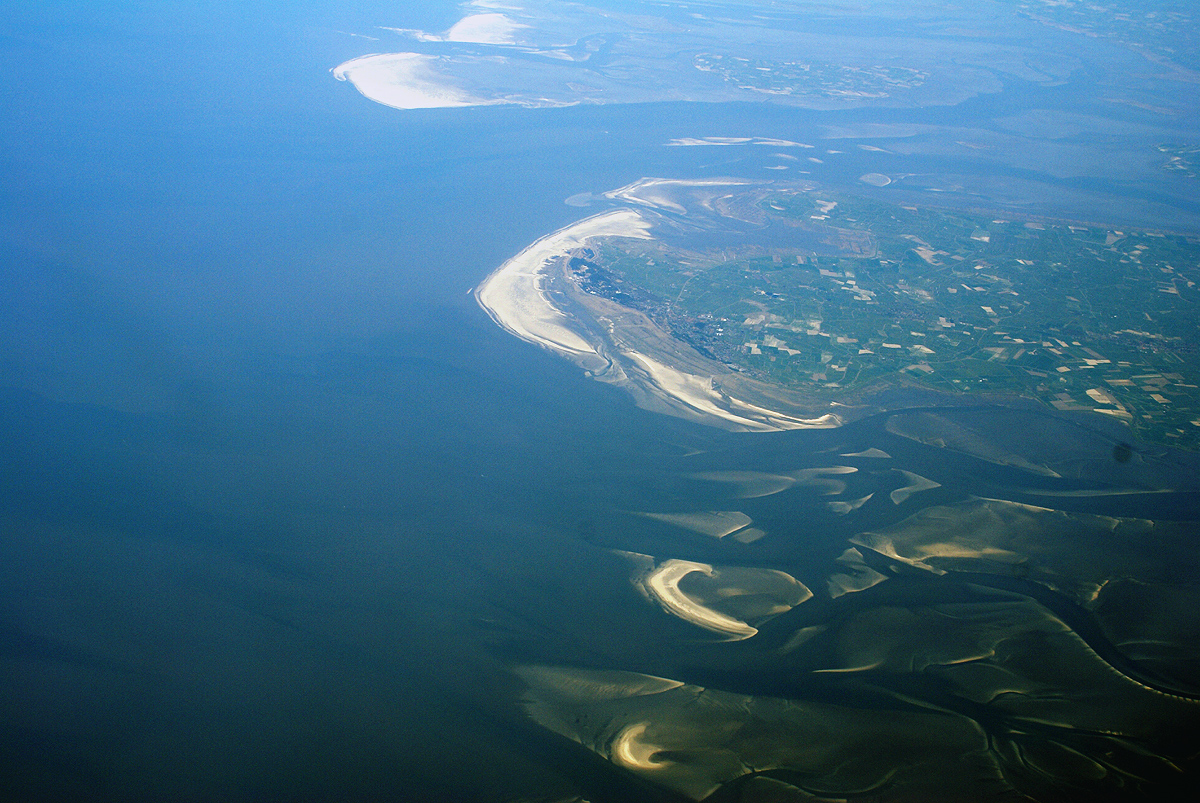Hamburg Wadden Sea National Park
The Hamburg Wadden Sea is a part of the North Sea and Wadden Sea National Park. As an exclave of the Free and Hanseatic City of Hamburg, it is located northwest Cuxhaven at the mouth of the Elbe to the North Sea ( German Bight).
The National Park is also a biosphere reserve and recognized by UNESCO with the other German Wadden Sea Park and the Dutch Wadden Sea as World Heritage. It is bordered to the south west and the east to the territory of the National Park Lower Saxon Wadden Sea and in addition to the actual tidal flats also includes the island Neuwerk and the barrier islands Scharhörn and Nigehörn, all belonging to the town branch Hamburg Neuwerk.
The Hamburg Wadden Sea consists mainly of sand and mud flats mixed with shallow tidal creeks, sandbanks and the aforementioned islands.
National park
By decision of the Hamburg Parliament on 9 April 1990, the area was redesignated a national park in Hamburg Wadden Sea. On 5 April 2001 the law was updated, thereby extending the national park area.
The total area of the national park ( protection zone 1 and zone 2 protection ) covers 13,750 ha areas of zone 1 are under special protection. For example, mudflats and carriage rides are allowed only on designated trails.
Within the National Park there are about 2000 species, of which about 250 are found only in the salt marshes of the Wadden Sea. Particularly noteworthy are harbor seals and gray seals. Due to the natural sediment input are in the mouth of the Elbe a high food supply for young fish and seabirds. The National Park is therefore an important resting and moulting area for seabirds.
For example, fire geese live on the Watt snails, which can be found in hundreds of thousands on the Wadden surface. The approximately 180,000 birds counted north west European Shelduck population also spends its moulting period from July to September in the Wadden Sea, which is protected by the three National Parks of Lower Saxony Wadden Sea, Schleswig -Holstein Wadden Sea and Wadden Sea of Hamburg. Also, about 200,000 eiders spend their moulting season; about 1000 eider pairs use the Wadden Sea as the breeding area. Most of them breed on the island Amrum.
At the same time, the Wadden Sea staging area for breeding birds Nordic countries that here to gnaw the fat reserves they need for a successful brood. An example is the entire Wadden Sea around 10-12 million waders, geese, ducks and gulls one.
Especially in the field of bird protection is a close collaboration with the association Jordsand.
Biosphere Reserve and World Heritage
Since 1992, the National Park is also a Biosphere Reserve, this devalued the national park on addition, since it according to the UNESCO program "man and biosphere " under international conservation stands ever since. Responsible for the care and the national affairs of the biosphere reserve is the National Park Administration.
Since 27 June 2011, the Hamburg Wadden Sea belongs - as since 2009 the Schleswig-Holstein, Lower Saxony and the Dutch Wadden Sea - a UNESCO World Heritage Site " Wadden Sea ".


,_Neuwerk,_Scharh%2525C3%2525B6rn,_Nigeh%2525C3%2525B6rn.jpg)







